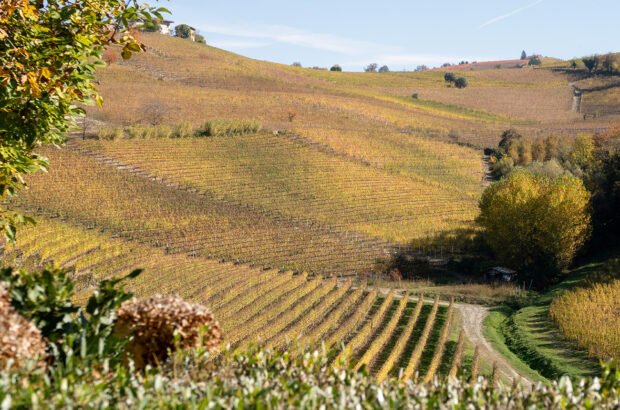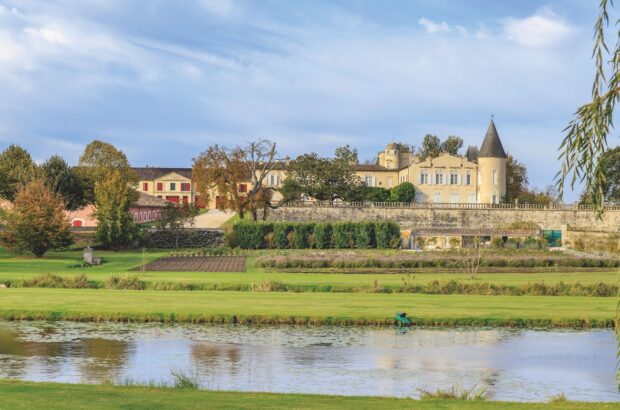February 2024 marks the second anniversary of Russia’s invasion of Ukraine. And though media attention has shifted largely to the Middle East in recent months, the fighting continues, with a colossal impact on the country and its inhabitants.
Amid these geopolitical challenges, Ukrainian winemakers – internationally led by Svitlana Tsybak, CEO of Beykush Winery – are showing resilience and innovation, despite the area planted to vineyards falling from 41,800ha in 2022 to 36,600ha today (source: OIV; Wines of Ukraine).
Scroll down to see O’Connor’s selection of wines from the Black Sea Region
The country’s leading producers remain undeterred, and even in the throes of war have been travelling abroad to show their wines to an international audience – one that is overwhelmingly keen to show its support, and at the same time to discover a new and intriguing wine region. In October last year, a group of 11 producers came together to present the first UK trade tasting of Ukrainian wines, held at private members’ club 67 Pall Mall in London, where about 60 wines of varying styles were shown.
The history
When we say ‘new’, of course, we mean new to the wine lover – not in terms of the nation’s heritage. Ukraine’s winemaking roots go all the way back to the 4th century BC and beyond, originating in Crimea. However, it was in the 11th century that wine cultivation kicked off in the northern regions around Kyiv and Chernihiv.
Fast-forward to the 18th and 19th centuries, and wine production soared under the control of Austria-Hungary, Russia and Poland. The modernisation of techniques and the introduction of new grape varieties marked this era.
In recent times, Ukraine, with 2,500km² of vineyards, was a major supplier of wine to the USSR, especially of Sovetskoye Shampanskoye (Soviet Sparkling Wine). The 1985-1988 anti-alcohol campaign instigated by then Soviet leader Mikhail Gorbachev led to the destruction of a significant number of vineyards. However, since 2000, Ukrainian winemakers have rebounded, reaching a deeper understanding of how best to adapt vine-growing to the terroir and climate.

Shabo Wine Culture Center, Odesa
Ukrainian grape varieties you’ve probably never heard of
In Ukraine, the focus is primarily on international grape varieties, such as Aligoté, Chardonnay, Pinot Gris, Riesling and Traminer for whites; and Cabernet Sauvignon, Merlot, Pinot Noir and Saperavi for reds. Some wineries are experimenting with varieties such as Albariño, Blaufränkisch, Pinotage, Tempranillo, Timorasso and Zweigelt.
As winemaking expands to northern and central-western regions, frost- or fungus-resistant varieties such as Johanniter, Solaris and Jupiter are on the rise, while notable examples of local varieties also gaining traction are…
• Citron Magarach A white grape variety from Yalta’s Magarach research institute, producing wines with a light straw to amber colour, pronounced citrus tones, and a full, round palate with low acidity. Its frost resistance makes it popular in northern Ukraine.
• Sukholymanske White Created in the second half of the 20th century, this white grape variety yields wines with a light golden colour, fruity aromas of pear and white flowers, and a harmonious taste with notes of melon and white plum, accompanied by a pleasant sourness in the aftertaste.
• Telti-Kuruk An indigenous white grape exclusive to Ukraine, having survived the phylloxera epidemic. Known as ‘fox tail’, thanks to the shape of its bunches, it offers fresh, mineral wines with floral and fruity notes of white acacia and quince. It has similarities to the Hungarian variety Juhfark (‘sheep’s tail’), and it is said Telti-Kuruk was planted back in the 16th century, when the territory belonged to the Turks.
• Odesa Black (Alibernet) This is a challenging but rewarding red grape first created in 1948, a crossing between Alicante Bouschet and Cabernet Sauvignon. It produces dark, intense red wines with mint and blackberry aromas and velvety jam notes.
Around the wine regions

Credit: Maggie Nelson
The climate in Ukraine varies from temperate to Mediterranean, with southern Crimea (the peninsula occupied by Russia since its 2014 invasion) basking in fruity ripeness. There are ‘officially’ six wine regions in Ukraine, delineated since Soviet times, but these are now deemed outdated by the producers. The promotional body Ukrainian Wine Company UK prefers to categorise the country’s land under vine as follows: the Black Sea region (including Odesa, Mykolaiv and Kherson), Bessarabia, Zakarpattia, Zaporizhzhia and Crimea.
The Black Sea region – Odesa (or Odessa), Mykolaiv and Kherson – has 2,500 years of winemaking history. With a blend of continental and maritime climates, this area produces robust reds and traditional sparkling wines. Key varieties include whites Sukholymanske and Telti-Kuruk and a range of international grapes.
Bessarabia, within the Odesa region, champions ancient winemaking traditions, applied to diverse varieties including Citron Magarach, Sukholymanske and Odesa Black. The region’s expansive steppes endure humid winters and hot, dry summers, with soils including the renowned Ukrainian black, fertile chernozem soils and mineral-rich loamy grounds.
Zakarpattia (Transcarpathia), bordering Hungary and Slovakia to the west, transitions from white to red wines. The Carpathian mountains create a unique microclimate for vine cultivation, with white varieties Traminer, Furmint, Chersegi (Cserszegi Fűszeres in Hungary) and red Blaufränkisch (also known by synonyms including Blauer Limberger, Kékfrankos, Lemberger or Modra Frankinja) all thriving. The region previously attracted tourists from around the world, with its vineyards, wineries, geothermal spas and ancient castles.
Zaporizhzhia, the smallest wine region with less than 5,000ha of vineyards, holds historical significance. With its shores washed by the Sea of Azov (above the Black Sea), this area enjoys a temperate continental climate with saline and humus-rich chernozem soils. Notable for resort towns, thermal springs and salt mining, it was also the location of the Zaporozhian Sich stronghold, the principal centre of Ukrainian Cossacks. As Decanter was going to press, 70% of he Zaporizhzhia region, including the majority of vineyards, remained under occupation, with the ongoing Ukrainian counteroffensive maintaining its position.
Crimea, though impacted by the 2014 invasion, remains one of Ukraine’s oldest winemaking regions. The climate is conducive to viticulture, with soils ranging from marl to chernozem.

Beykush Winery founder Eugene Shneyderis
In defiance
Most of the new wineries that have sprung up in Ukraine in the last five years are located in cool-climate areas. These developing, and ‘unofficial’ wine regions – (west to east) Lviv, Ternopil, Khmelnitsky, Vinnitsa Kyiv, Chernihiv, Dnipro and Kharkiv – produce high-acidity and aromatic white wines and very bright rosés. Some winemakers are trying their hand at producing amber and sparkling wines, too.
Experimentation is widespread, even while the winemakers navigate the unprecedented challenges caused by war. Wines are emerging produced by varied approaches, ranging from ancient Georgian techniques such as qvevri, to the most modern methods. And, with the country in the spotlight, even if for tragic reasons, the world is taking notice.
The international exposure has become a lifeline for Ukrainian winemakers, with heightened interest coming from new and returning customers. The stories they have to tell resonate with resilience and hope, offering a glimpse into the promising future of Ukrainian wines. Ukraine’s indomitable spirit is bottled, and waiting to be shared with the world.
Five key Ukrainian producers to know

Ivan and Alla Plachkov, Kolonist
Beykush
This family-owned winery spans 14ha and is located just 2km from the occupied area. In Chernomorka village, on the Beykush peninsula by the Black Sea, it embraces French, Italian and Georgian clones alongside the rare Telti-Kuruk grape. From traditional- method sparkling to amphora-aged wines, its experimentation captures the essence of this special terroir.
Bolgrad
Established in 1998 by the Markushevskiy and Maslenkov families, Bolgrad Winery embodies three generations of winemaking expertise. Thanks to their proximity to the Black Sea, the vineyards benefit from a microclimate that imbues the wines with salinity and freshness. With more than 600ha under vine, Bolgrad produces about 6 million bottles annually.
Kolonist
Founded in 2005 in Bessarabia (the south of the Odesa region), Kolonist Winery, owned by the Plachkov family, has a range that runs from classic aged whites to indigenous specialities such as Odesa Black and Sukholymanske white. Co-owner Hryhoriy Plachkov’s military service experience is reflected in the winery’s tenacity.
Shabo
Founded in 1822 by Swiss settlers, southwest of Odesa, Shabo is now operated by a Georgian winemaking family. Despite the war’s challenges, especially around Odesa, and disrupted work shifts due to air raid sirens, Shabo continues to craft wines from its modern winery near the Black Sea – its cellars of almost 5,000m² are among the largest in Ukraine, and can hold more than 13 million bottles. The team works with international varieties, but also varieties originating from the wider region, such as Saperavi, and specifically from Ukraine, including Telti-Kuruk.
TM Villa Tinta or Vinhol Oksamitnoe
A family estate winery since 1998 with 500ha of vines planted, situated in the historic winemaking district of Bolgrad, which is in southern Ukraine, in the Odesa region near the Black Sea and the border with Romania. The sub-tropical climate is tempered by lake Yalpuh. It works with a wide range of grapes including Sukholymanske and Odesa.
Taste of Ukraine: O’Connor’s selection from the Black Sea Region
Wines were tasted non-blind












